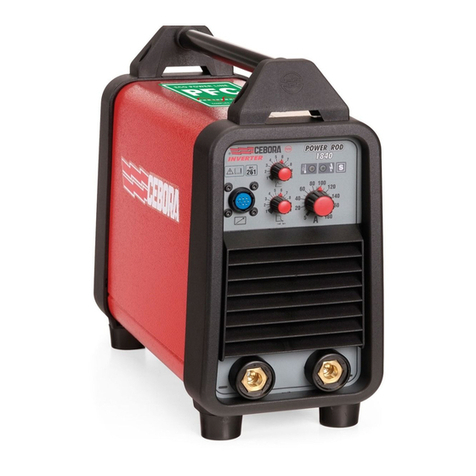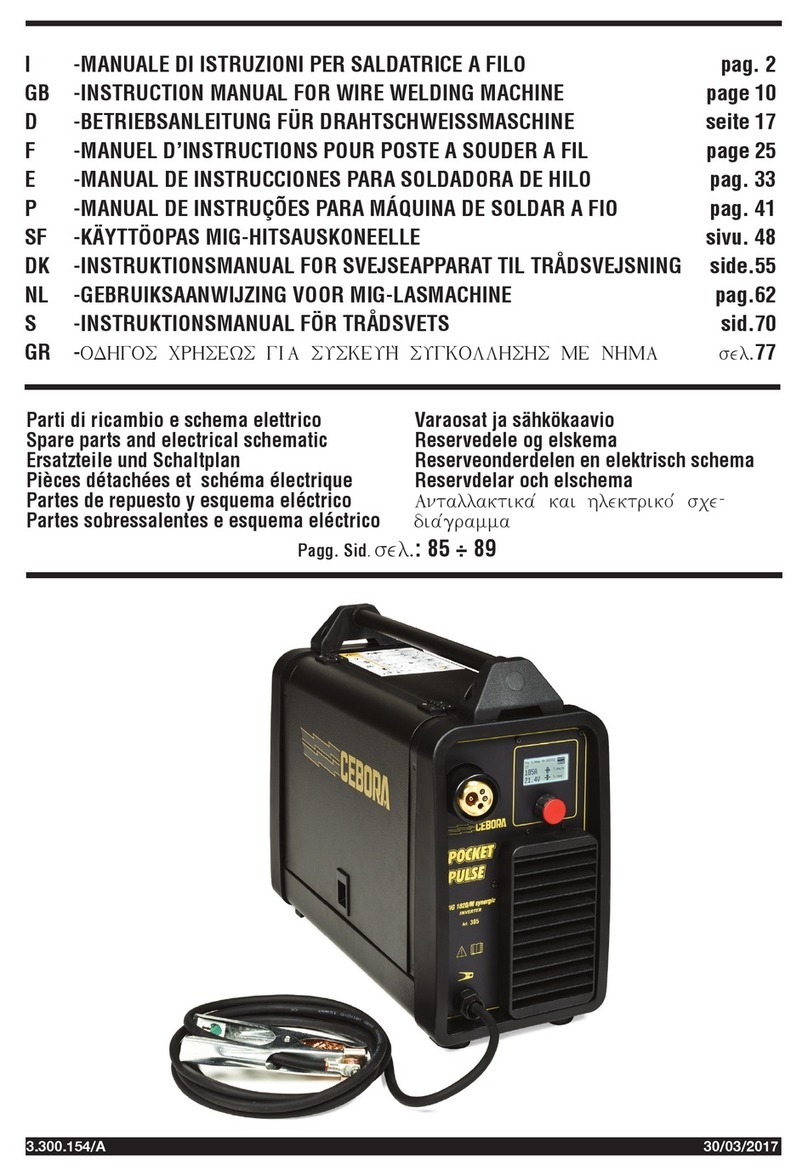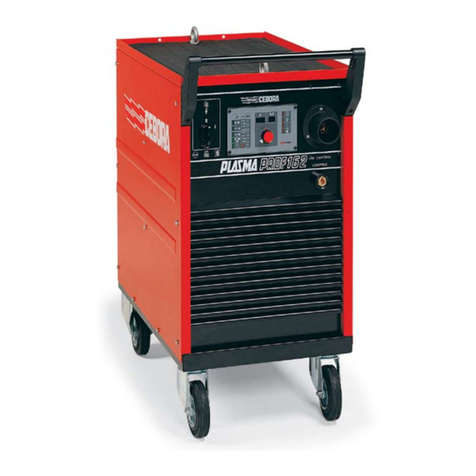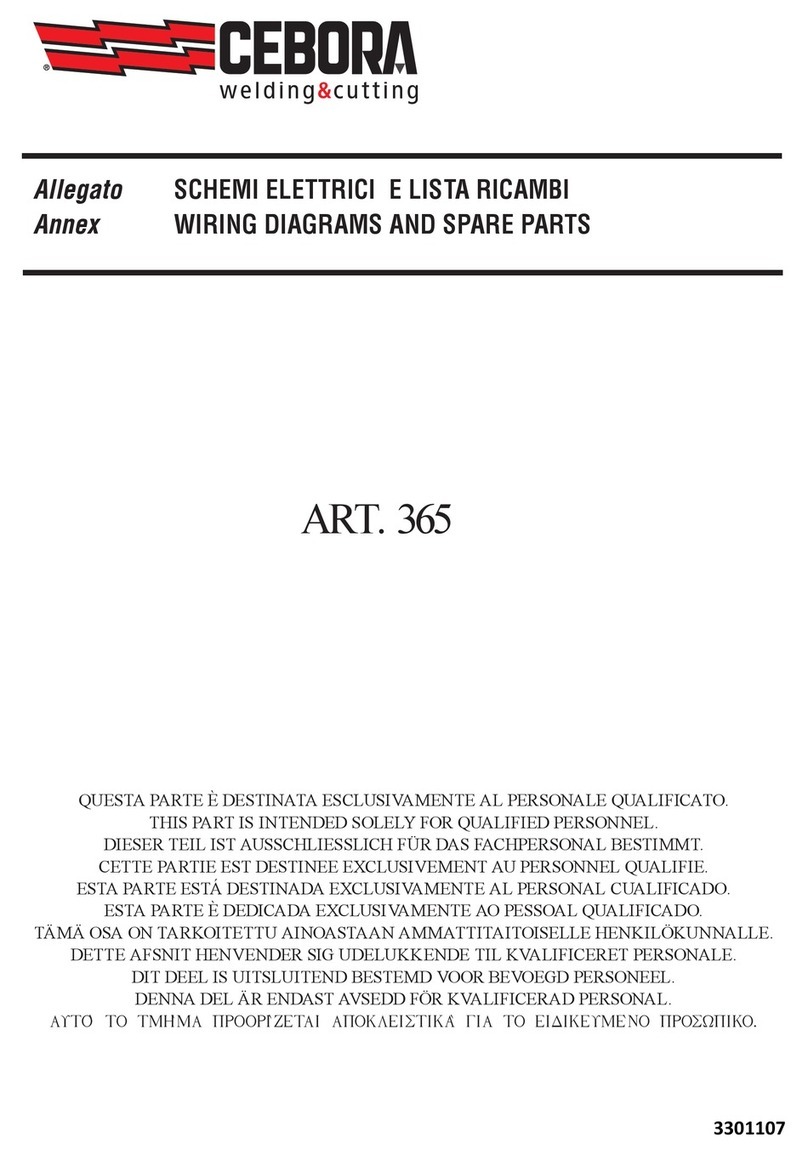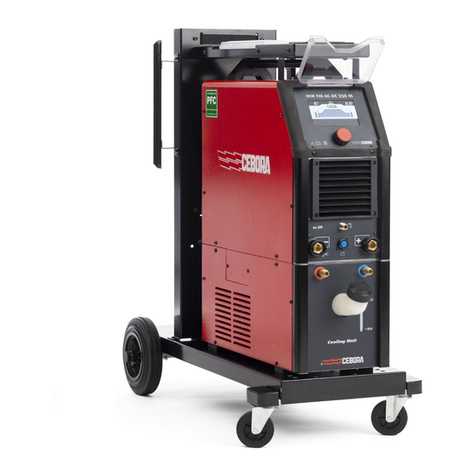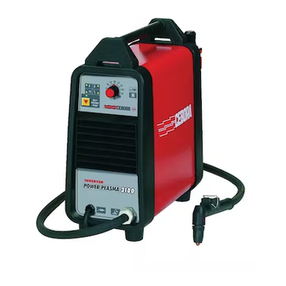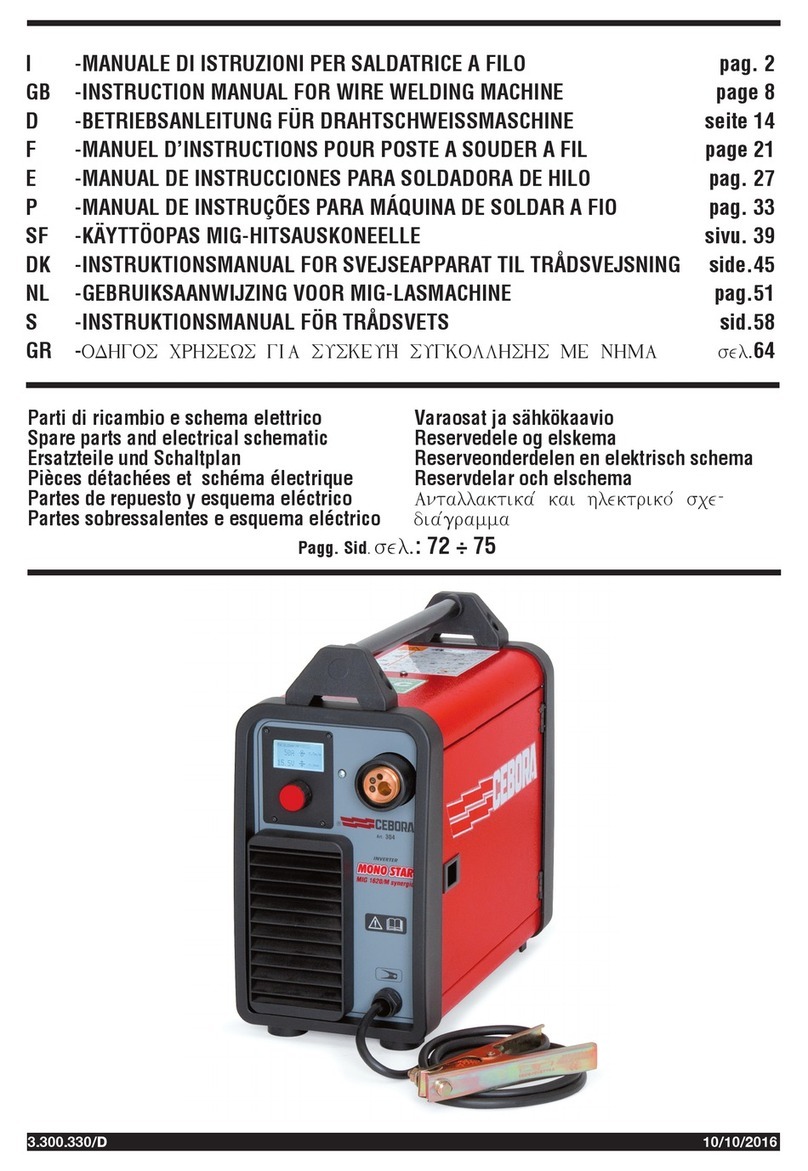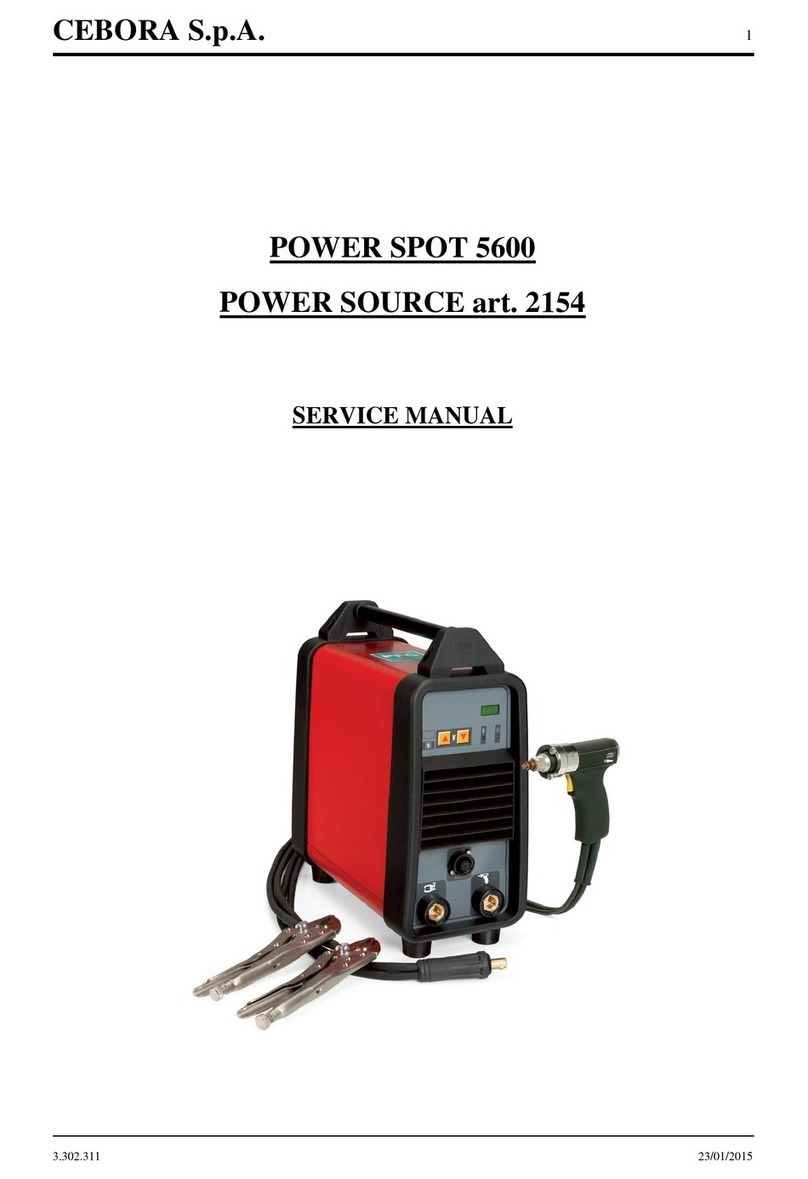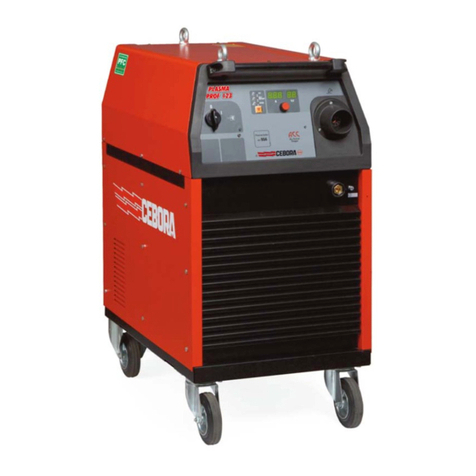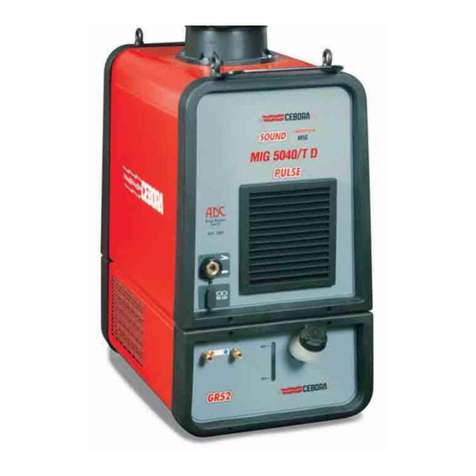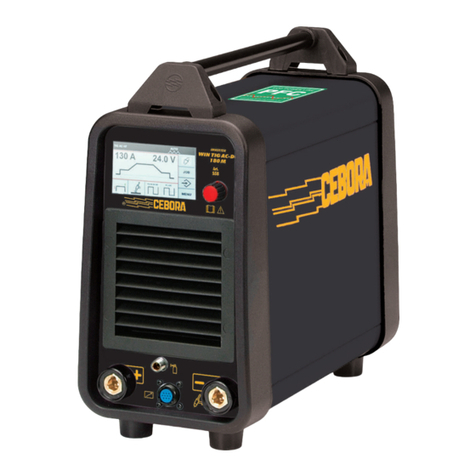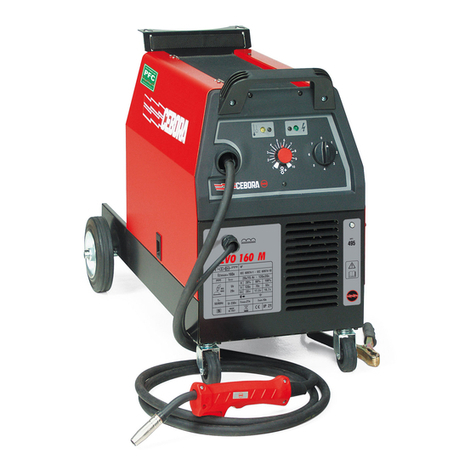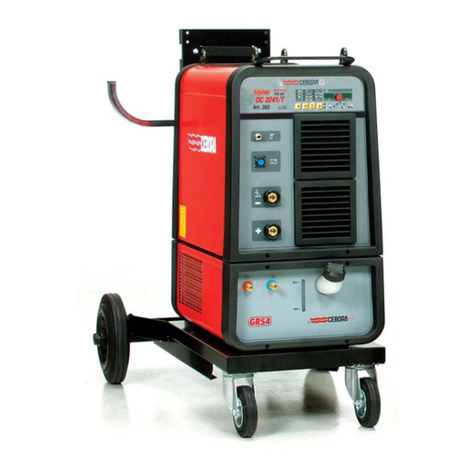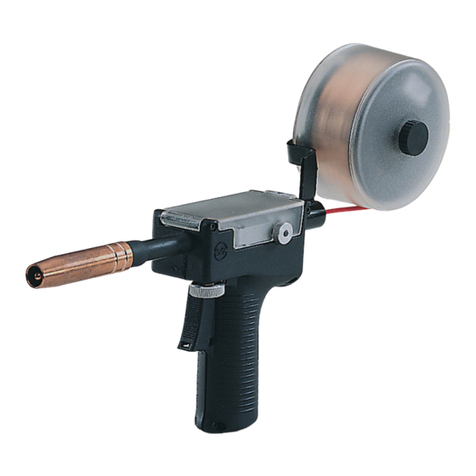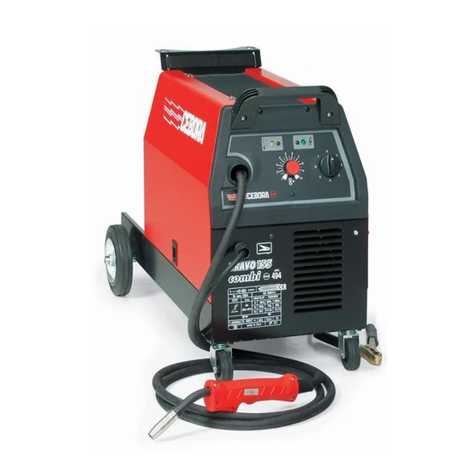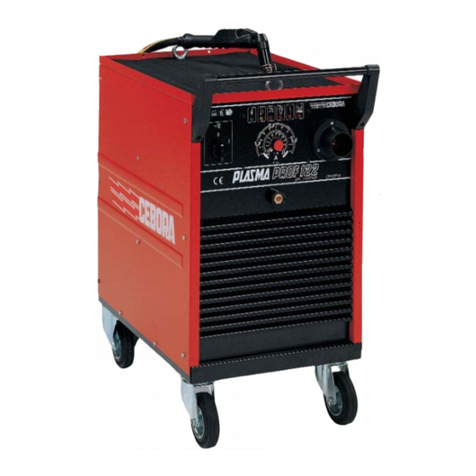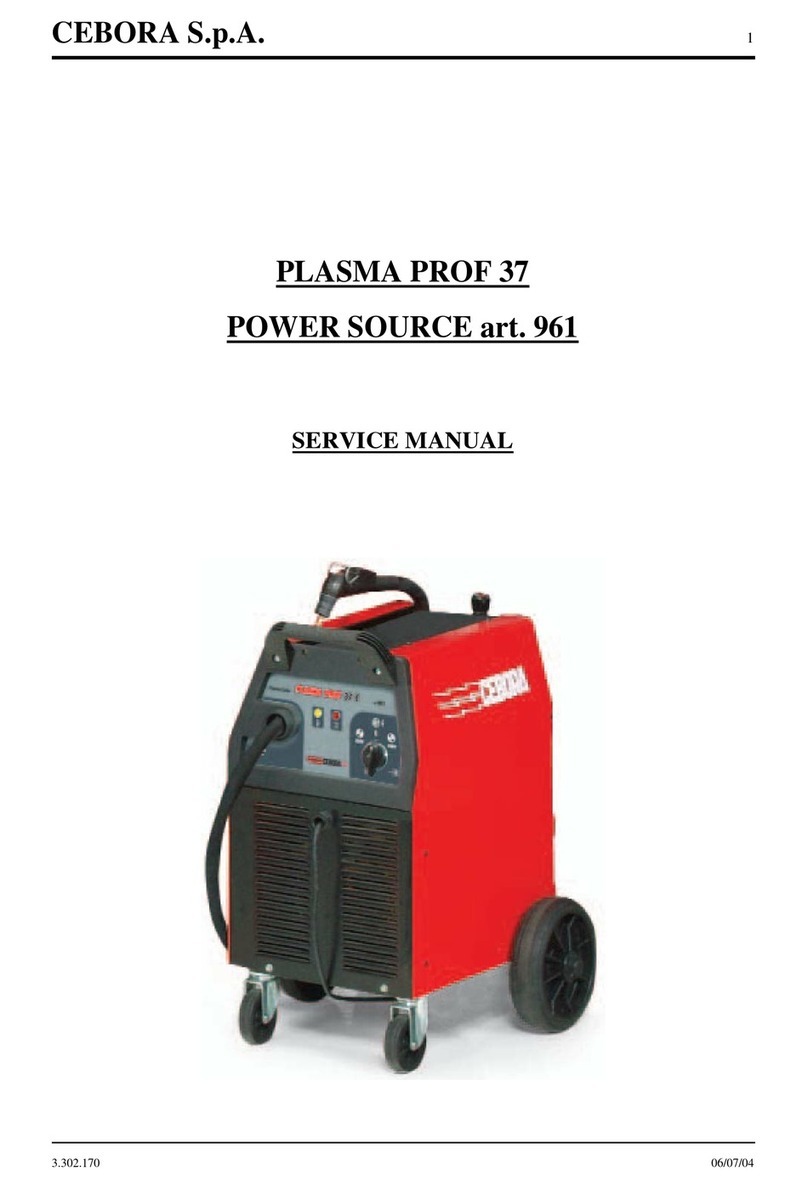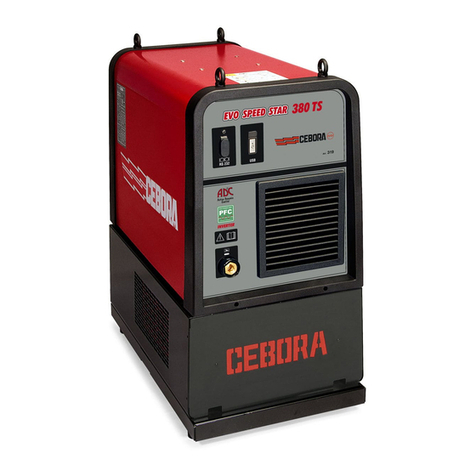6
of the arc, thus you should take special precautions:
A) CYLINDERS
lDo not directly connect cylinder to the machine gas hose
without a pressure regulator.
lHandle or use pressure cylinders in conformity with the
existing rules.
lDo not use leaking or damaged cylinders.
lDo not use cylinders which are not well secured.
lDo not carry cylinders without the protection of the
installed valve.
lDo not use cylinders whose content has not been clearly
identified.
lNever lubricate cylinder valves with oil or grease.
lDo not put the cylinder in electrical contact with the arc.
lDo not expose cylinders to excessive heat, sparks, mol-
ten slags or flame.
lDo not tamper with the cylinder valves.
lDo not try to loosen tight valves by means of hammers,
keys, or any other object.
lNEVER DEFACE or alter name, number, or other
markings on a cylinder. It is illegal and hazardous.
lDo not lift cylinders off the ground by their valves or
caps, or by chains, slings or magnets.
lNever try to mix any gases in a cylinder.
lNever refill any cylinder.
lCylinder fittings should never be modified or exchanged.
B) PRESSURE REGULATORS
l Keep pressure regulators in good condition. Damaged
regulators may cause damages or accidents, they should
only be repaired by skilled personnel.
l Do not use regulators for gases other than those for
which they are manufactured.
l Never use a leaking or damaged regulator.
l Never lubricate regulators with oil or grease.
C) HOSES
lReplace hoses which appear damaged.
lKeep hoses unwound in order to avoid bending.
lKeep the excess hose wound and out of the working
area in order to avoid any damage.
7.5 RADIATIONS
Ultra-violet radiation created by the arc may
damage your eyes and burn your skin.Therefore:
lWear proper clothing and helmet.
lDo not use contact lenses!! The intense heat coming
from the arc may cause them to stick to the cornea.
lUse masks with grade DIN 10 or DIN 11 safety lenses at
the least.
lProtect people in the surrounding welding area.
Remember: the arc may dazzle or damage the eyes. It is
considered dangerous up to a distance of 15 meters (50
feet). Never look at the arc with the naked eye.
lPrepare the welding area so as to reduce reflection and
transmission of ultra-violet radiation. Paint walls and expo-
sed surfaces in black to reduce reflection, install
sheathings or curtains to reduce ultra-violet transmis-
sions.
lReplace mask lenses whenever damaged or broken.
7.6 ELECTRIC SHOCK
Electric shock can kill.
All electric shocks are potentially fatal.
l Do not touch live parts.
lInsulate yourself from the piece to be cut and from the
ground by wearing insulated gloves and clothing.
lKeep garments (gloves, shoes, hats, clothing) and body
dry.
lDo not work in humid or wet areas.
lAvoid touching the piece to be welded.
lShould you work close to or in a dangerous area, use all
possible precautions.
lIf you should feel even the slightest electric shock sen-
sation, stop welding immediately. Do not use the machine
until the problem is identified and solved.
lAlways fit an automatic wall switch with adequate power,
possibly close to the machine, allowing you to immediately
switch the machine off in case of an emergency.
lFrequently inspect the power supply cable.
lDisconnect power supply cable from mains before repla-
cing cables or before removing unit covers.
lDo not use the unit without protection covers.
lAlways replace any damaged parts of the unit, with ori-
ginal material.
lNever disconnect unit safety devices.
lMake sure that the power supply line is equipped with an
efficient earth plug.
lMake sure that the work bench and the workpiece are
connected to an efficient earth plug.
lAny maintenance should only be carried out by qualified
personnel aware of the risks due to dangerous voltages
necessary for the operation of the unit.
7.7 PACE MAKER
lMagnetic fields from high currents can affect pacemaker
operation. Persons wearing electronic life support equip-
ment (pacemaker) should consult their doctor before
going near arc welding, gouging or spot welding opera-
tions.
7.8 CAUTION! WELDING WIRE CAN CAUSE PUNCTU
RE WOUNDS.
lDo not press gun trigger until instructed to do so.
lDo not point gun toward any part of the body, other peo-
ple, or any metal when threading welding wire.
7.9. MOVING PARTS CAN CAUSE INJURY.
Moving parts, such as fans, can cut fingers and hands and
catch loose clothing.
lKeep all doors, panels, covers, and guards closed and
securely in place.
lHave only qualified people remove guards or covers for
maintenance and troubleshooting as necessary.
lKeep hands, hair, loose clothing, and tools away from
moving parts.
lReinstall panels or guards and close doors when servi-
cing is finished and before starting the machine.
7.10 NOISE
These power source alone do not produce noise
levels exceeding 80 dB. The welding procedure,
however, may produce noise levels in excess of
80 dB. in which case the machine operator must take the
necessary safety precautions as prescribed by the natio-
nal safety regulation.
